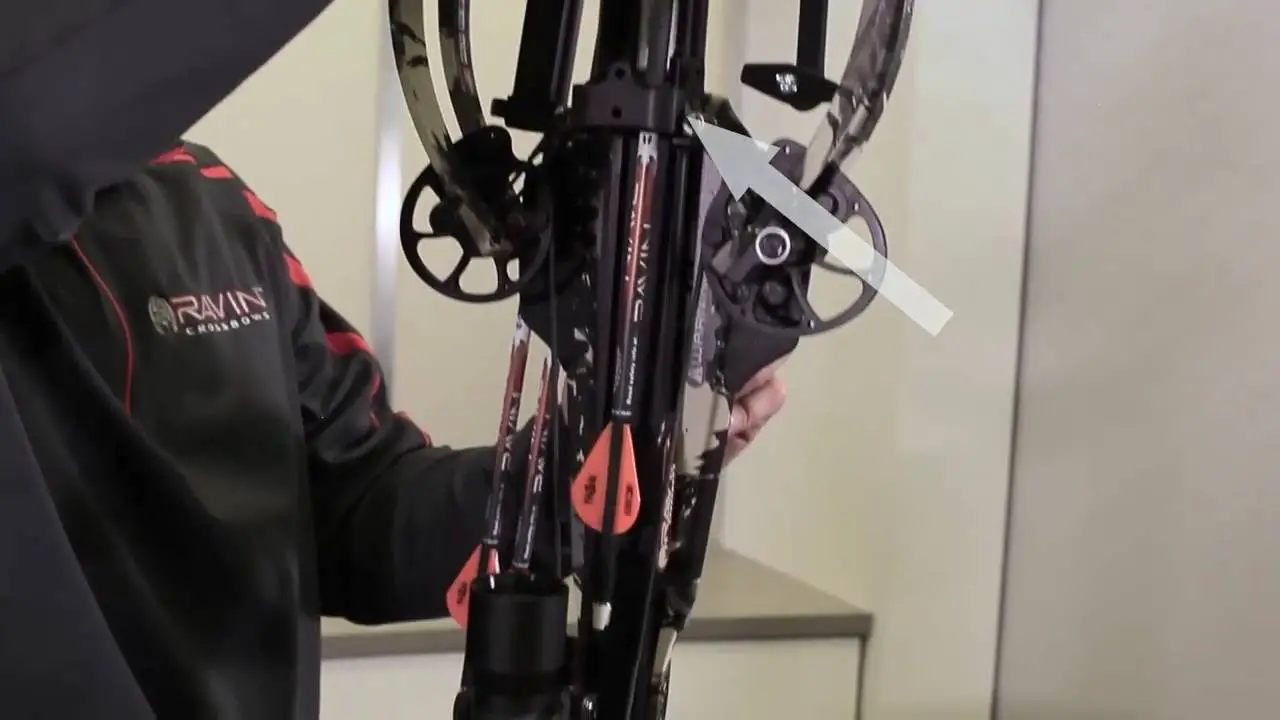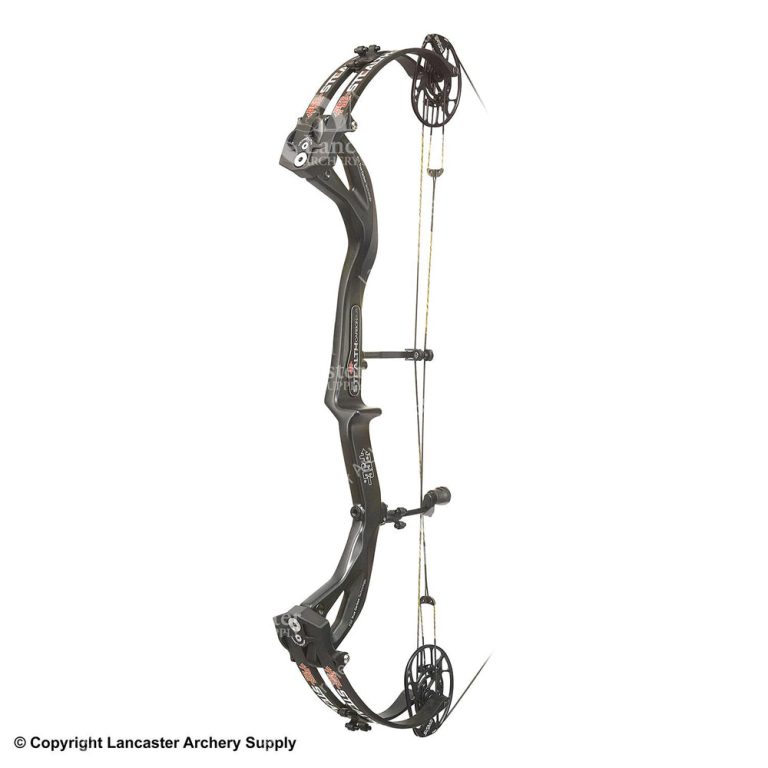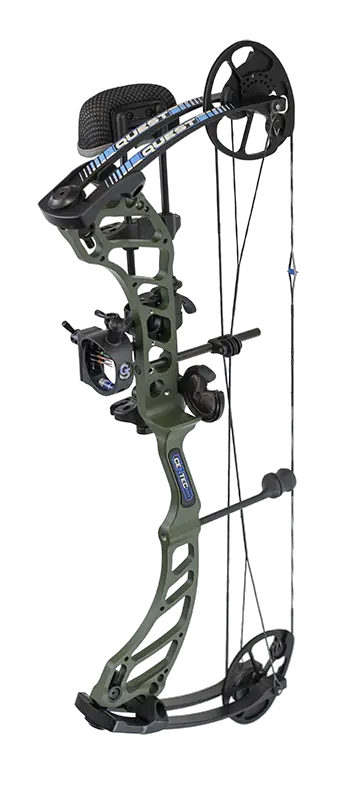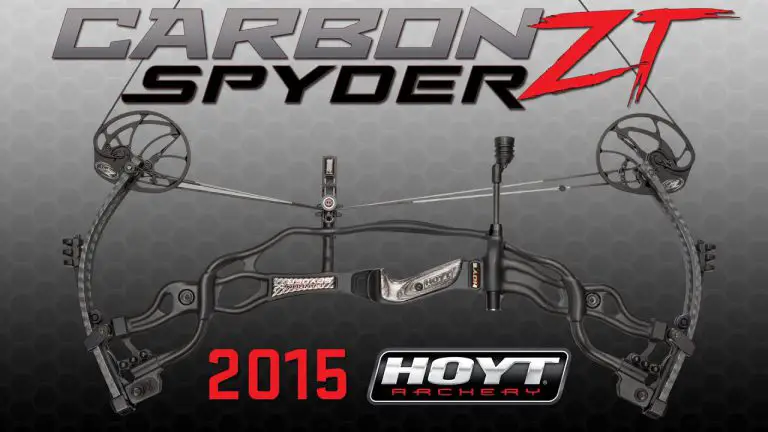How To Load A Ravin Crossbow
Are you a bow enthusiast looking to explore the world of crossbows? If so, then loading a Ravin Crossbow is a crucial skill you need to master. In this article, we will guide you through the step-by-step process of loading a Ravin Crossbow, ensuring that you have the knowledge and confidence to handle this innovative piece of archery equipment. From understanding the key components to choosing the right crossbow for your needs, we’ve got you covered. So, let’s dive into the world of Ravin Crossbows and discover how to load this powerful and high-performance weapon.
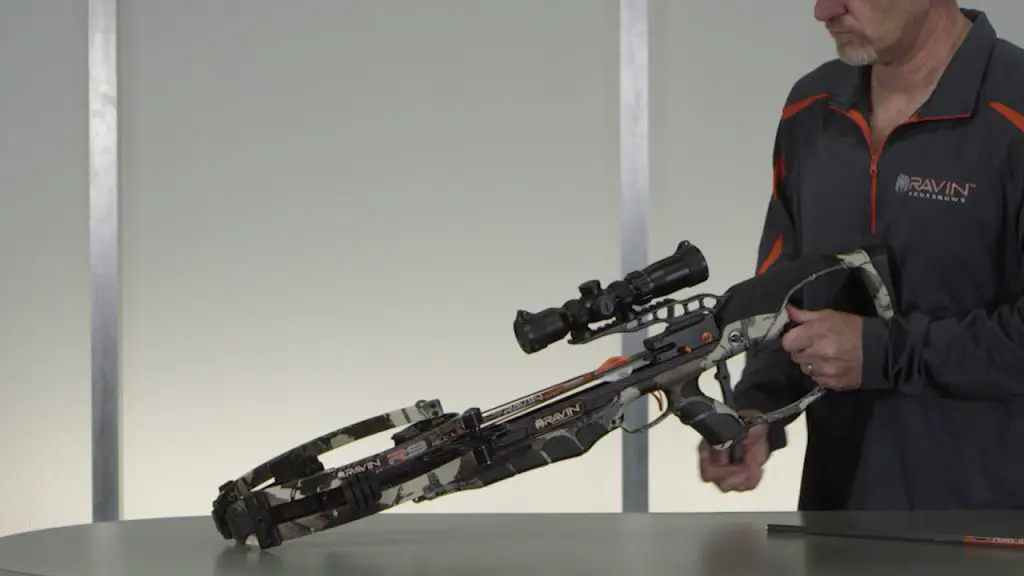
What is a Crossbow?
A crossbow is a type of weapon that combines the characteristics of a bow and a firearm. It consists of a horizontal bow-like assembly, known as the prod, mounted on a stock with a trigger mechanism. To fire a crossbow, the user pulls back the string, known as the bowstring, which is then held in place by a locking mechanism. When the trigger is pulled, the bowstring is released, propelling an arrow or bolt towards the target with great force and accuracy.
Components of a Ravin Crossbow
A Ravin crossbow, like any other crossbow, is composed of several essential components that work together to ensure its proper functioning. Let’s take a closer look at each of these components:
Stock
The stock is the main frame and handle of the crossbow, which the shooter holds while aiming and firing. It provides stability and support, allowing for precise shots. The stock of a Ravin crossbow is crafted with ergonomics in mind to ensure a comfortable and secure grip.
Bow Assembly
The bow assembly of a crossbow consists of the prod, which is the curved piece that stores the energy required for propelling the arrow. In the case of a Ravin crossbow, the bow assembly is meticulously engineered to maximize power and accuracy while minimizing noise and vibration.
Cams and Limbs
Cams and limbs are critical components responsible for generating the force necessary to propel the arrows. The cams, which are the wheels or pulleys attached to the ends of the limbs, help to reduce the draw weight and increase the let-off, making it easier to hold the string at full draw. The limbs, on the other hand, store and release the energy needed for the arrow’s flight. Ravin crossbows are designed with advanced cam and limb technology to provide exceptional performance and consistency.
Scope and Sight
The scope and sight of a crossbow aid in aiming and targeting the desired point of impact. It allows the shooter to align the crosshairs with the target accurately. Ravin crossbows often come equipped with high-quality scopes and sights that offer clear visibility and precise aiming.
Quiver
A quiver is a container or holder attached to the crossbow where arrows or bolts are stored. It allows for quick and easy access to additional projectiles during hunting or target shooting. Ravin crossbows typically come with a compatible quiver designed to securely hold the arrows while ensuring they are readily available when needed.
Cocking Mechanism
The cocking mechanism is employed to draw back the bowstring, as it requires a significant amount of force to accomplish this manually. Ravin crossbows feature efficient cocking mechanisms, including both manual options and built-in devices, to make the process easier and more convenient for the shooter.
Bolts/Arrows
Bolts or arrows are the projectiles used in crossbows. They are typically shorter and heavier than traditional archery arrows. Ravin crossbows are designed to accommodate specific bolts/arrow types to ensure optimal performance and compatibility with the crossbow’s specifications.
Cables and String
The cables and string of a crossbow are crucial components that connect the limbs to the cams and transfer the stored energy to propel the arrow. It is essential to regularly inspect the cables and string of a Ravin crossbow to ensure they are in good condition and free from any signs of wear or damage.
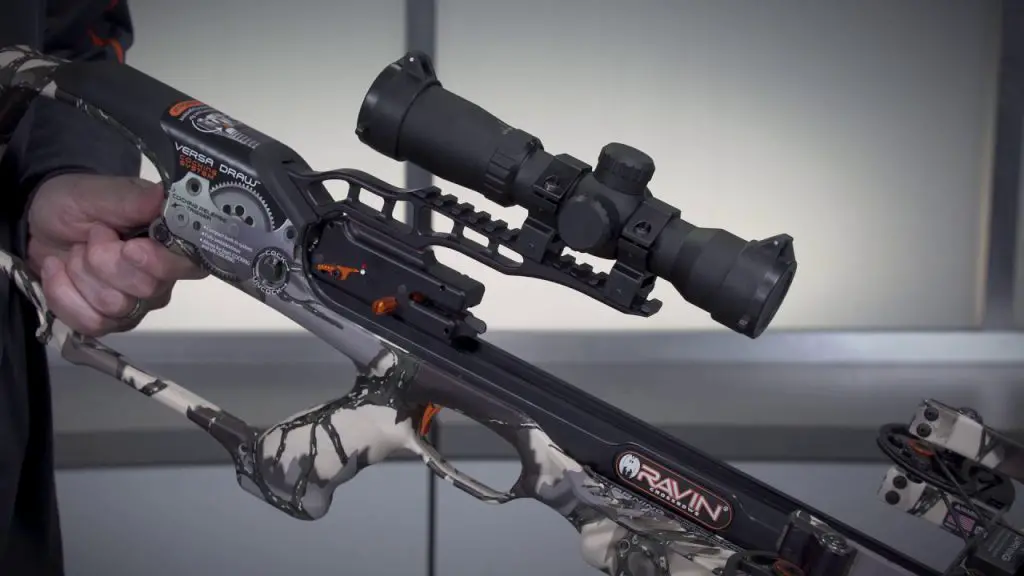
Checking and Preparing the Crossbow
Before every use, it is essential to carefully inspect and prepare the crossbow. This ensures optimal performance, accuracy, and safety. Let’s go through the necessary steps to check and prepare a Ravin crossbow:
Inspecting the Crossbow
Start by visually inspecting the entire crossbow for any visible damage, cracks, loose or broken parts. Always ensure that the stock, limbs, riser, and all other components are intact and in good condition. If any issues are detected, it is crucial to have them addressed by a professional before using the crossbow.
Checking the String and Cables
Inspect the string and cables for any signs of fraying, stretching, or damage. It is important to ensure that the string is properly aligned and securely attached to the limbs and cams. If there are any concerns, consult the manufacturer’s guidelines or seek assistance from a certified technician.
Checking the Limbs
Check the limbs for any cracks, splintering, or other damages. The limbs should be firmly attached to the riser and show no signs of twisting or misalignment. If any issues are noticed, refrain from using the crossbow and seek professional advice.
Checking the Bolts/Arrows
Inspect the bolts/arrows for straightness, proper fletching, and intact nocks. Ensure that there are no signs of damage or wear on the shafts, and the field points or broadheads are securely attached. Any damaged or worn-out bolts/arrows should not be used.
Checking the Scope and Sight
Examine the scope and sight for any dirt, debris, or misalignment. Make sure that the mounting screws are tightened properly and that the optics are clean and clear. If adjustments are needed, follow the manufacturer’s instructions to align the scope and sight correctly.
Checking the Quiver and Cocking Mechanism
Ensure that the quiver is securely attached to the crossbow and that it can hold the bolts/arrows securely in place. If a built-in cocking mechanism is present, inspect it for any faults or malfunctions. Verify that it operates smoothly and effectively. If using a manual cocking device, ensure it is in good condition and properly functioning.
Loading and Cocking the Crossbow
Properly loading and cocking the crossbow are crucial steps that must be executed correctly to ensure safe and accurate shooting. Let’s go through the process of loading and cocking a Ravin crossbow:
Attaching the Quiver
Before loading the crossbow, attach the quiver securely to the designated mounting points on the crossbow. Make sure it is securely fastened and stable to prevent any accidents or interference while shooting.
Inserting the Bolts/Arrows
Gently and carefully insert the bolts/arrows into the quiver, making sure they are positioned correctly and securely. Take extra care to avoid accidental discharges or injuries while handling the loaded crossbow.
Securing the Bolts/Arrows
With the crossbow in a secure and stable position, firmly push the bolts/arrows into the flight groove until they are fully in place. Ensure that the nocks are properly seated against the string and there is no lateral movement or play.
Cocking the Crossbow using a Cocking Device
If your Ravin crossbow is equipped with a built-in or separate cocking device, follow the manufacturer’s instructions to engage the cocking mechanism. Properly align the hooks or cranks with the string and use a smooth, even motion to draw back the string until it is fully cocked. Always keep the cocking device and your fingers clear of the string path to prevent any injuries.
Cocking the Crossbow with Manual Cocking
If you choose to cock the crossbow manually, ensure that you have a firm grip on the string and use your legs to apply downward force while pulling back. Maintain control and evenly distribute the pressure to prevent the string from slipping or becoming misaligned. Once the string is fully drawn and engaged with the latch, verify that it is secure and properly locked in place.

Aiming and Shooting
Proper aim and technique are essential to achieve accuracy and precision when shooting a crossbow. Here are some steps to follow when aiming and shooting a Ravin crossbow:
Proper Stance and Grip
Assume a stable and comfortable shooting stance, positioning your feet shoulder-width apart. Ensure a firm but relaxed grip on the stock, with your dominant hand positioned comfortably on the fore-end. Maintain a slight bend in your front arm and keep your body aligned with the target.
Using the Scope and Sight
Align your dominant eye with the scope and sight, focusing on the crosshairs or reticle. Take the time to adjust the scope and sighting system to match your shooting preferences and the target distance. Practice sighting-in your crossbow before hunting or target shooting to ensure optimal accuracy.
Aiming at the Target
With your eye focused on the reticle or crosshairs, take a deep breath and visualize the desired point of impact on the target. Steadily align the crosshairs with the target, ensuring that you maintain a relaxed and natural posture. Take your time to aim and ensure proper alignment before proceeding.
Releasing the Trigger
Once you have carefully aimed and aligned the crosshairs with the desired point of impact, smoothly and steadily squeeze the trigger. Avoid jerking or flinching during the trigger pull, as it can negatively impact your aim and accuracy. Focus on maintaining a consistent and controlled motion until the trigger releases and the bolt/arrow is propelled towards the target.
Follow-through
After the trigger is released, maintain your aim and position for a moment, allowing the arrow/bolt to complete its flight towards the target. Avoid any abrupt or disruptive movements that could affect the arrow’s trajectory. Remain focused and observe the impact to assess your shot’s success and make any necessary adjustments for subsequent shots.
Unloading and Storing the Crossbow
After shooting, it is essential to safely unload and store the crossbow to prevent accidents and maintain its longevity. Let’s review the steps to unload and store a Ravin crossbow:
Removing the Bolts/Arrows
With extreme caution, remove the bolts/arrows from the crossbow. Ensure that you are in a safe and controlled environment, pointing the crossbow in a safe direction away from people or objects. Pull the bolts/arrows out of the flight groove gently, taking care to avoid any sudden movements or accidental discharges.
Disengaging the Safety
Once the crossbow is unloaded, disengage the safety mechanism, ensuring that it is in the “safe” position. This prevents any accidental firing and avoids potential injuries when handling or storing the crossbow.
Uncocking the Crossbow using a De-Cocking Device
If your Ravin crossbow is equipped with a de-cocking device, follow the manufacturer’s instructions to safely uncock the crossbow. These devices allow for the controlled release of tension from the bowstring without shooting an arrow or bolt. Always ensure that you are in a safe environment and properly follow the guidelines to avoid accidents.
Uncocking the Crossbow with Manual Uncocking
If a de-cocking device is not available or preferred, manual uncocking can be performed cautiously. Keep your fingers and body clear of the string’s path and slowly apply pressure to the string, evenly releasing it from the latch while controlling its descent. Exercise extreme care and attention to avoid unnecessary risks when manually uncocking a crossbow.
Storing the Crossbow Safely
When not in use, store your Ravin crossbow securely to maintain its condition and prevent accidents. Place it in a cool, dry, and well-ventilated area, away from extreme temperatures, moisture, and direct sunlight. Ideally, use a designated crossbow case or pouch to protect it from dust, debris, and potential damage. Always follow the manufacturer’s recommendations for proper storage and maintenance.
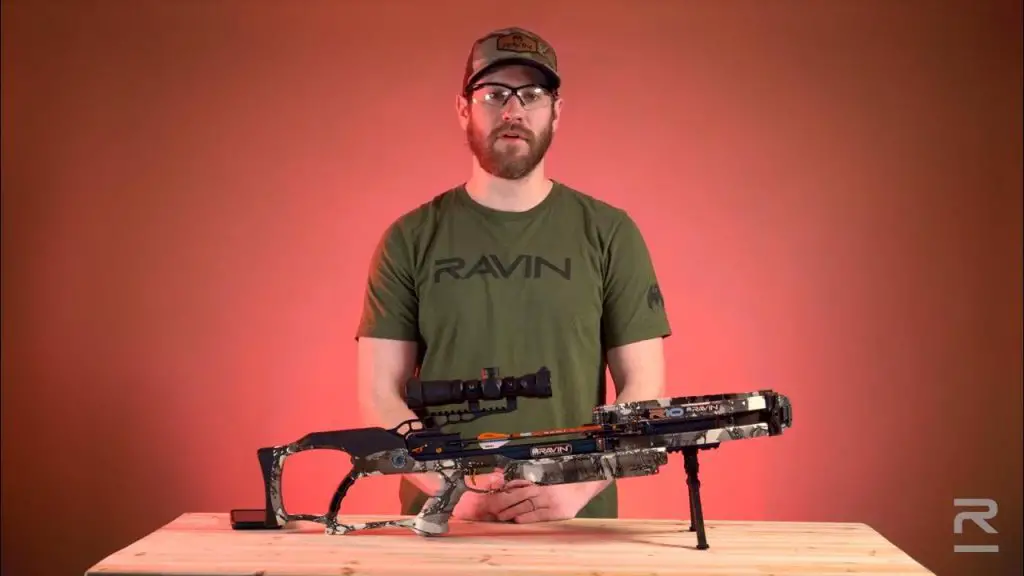
Maintaining and Cleaning the Crossbow
Regular maintenance and cleaning are vital to ensure the longevity and optimal performance of your Ravin crossbow. Here are some essential steps to follow when maintaining and cleaning your crossbow:
Inspecting Strings, Cables, and Limbs
Periodically inspect the strings, cables, and limbs for any signs of wear, fraying, or damage. Carefully examine the loops, servings, and limb pockets for tightness and proper alignment. If any issues are identified, consult the manufacturer’s guidelines or seek assistance from a knowledgeable professional.
Lubricating Moving Parts
Apply a small amount of recommended lubricant to the various moving parts of the crossbow, such as the trigger mechanism, cams, and other pivot points. Proper lubrication reduces friction and ensures smooth and consistent operation. However, it is essential not to over-lubricate, as excess lubricant can attract dirt and debris.
Replacing Worn-out Parts
If any components of your Ravin crossbow become worn-out, damaged, or malfunctioning, it is crucial to replace them promptly. Do not attempt to use a crossbow with compromised parts, as it can lead to unsafe conditions and reduced performance. Consult the manufacturer or a certified technician for appropriate replacements and repairs.
Cleaning the Scope and Sight
Maintaining a clean scope and sight is essential for clear and accurate sighting. Use a soft, lint-free cloth to gently remove any dirt, debris, or smudges from the lens surfaces. Avoid using abrasive materials or harsh chemicals that can damage the coatings or optics. If necessary, consult the manufacturer’s instructions for specific cleaning recommendations.
Cleaning the Bolts/Arrows
Inspect the bolts/arrows for any dirt, debris, or residue that can affect their performance. Use a damp cloth or mild cleaning solution to gently clean the shafts, fletching, and points. Be cautious not to immerse the bolts/arrows in water or expose them to excessive moisture, as it can damage the materials or affect their structural integrity. Allow them to dry thoroughly before storage or reuse.
Safety Measures
When using a Ravin crossbow or any other crossbow, it is imperative to prioritize safety and adhere to proper safety measures. Here are some critical safety guidelines to follow:
Knowing and Following Local Laws and Regulations
Before using a crossbow, familiarize yourself with the relevant local laws and regulations concerning crossbow usage, hunting seasons, and permitted areas. Obtain any required licenses or permits and strictly adhere to the specific guidelines and restrictions set forth by the authorities.
Using Proper Safety Gear
Always wear appropriate safety gear when operating a crossbow, including safety glasses or goggles to protect your eyes from debris or accidental discharges. Additionally, consider using a suitable crossbow cocking aid or device to facilitate safe and controlled cocking. Use a crossbow case or a cover to protect the crossbow during transportation and storage.
Being Mindful of the Crossbow’s Power
Recognize and respect the power and potential dangers associated with using a crossbow. Treat it with the same caution and respect as you would any firearm. Never point the crossbow at anything you do not intend to shoot, and always keep your fingers away from the string and trigger until you are ready to shoot.
Inspecting Arrows/Bolts
Always thoroughly inspect your bolts/arrows before each use. Remove any damaged or worn-out bolts/arrows from service and replace them with reliable and compatible replacements. Ensure the nocks, fletching, and points are securely attached and in good condition. Avoid using damaged or compromised bolts/arrows, as they can lead to inaccurate shots or equipment failures.
Maintaining a Clear Shooting Lane
When shooting a crossbow, it is essential to have a clear and unobstructed shooting lane. Ensure that there are no people, animals, or objects within the potential path of the arrow. Maintain a safe distance from other individuals to prevent accidents or injuries. Properly select a suitable and safe target that allows for a clear backstop to contain the arrows and prevent unintended damage or harm.
In conclusion, owning and operating a Ravin crossbow can provide an exhilarating and rewarding archery experience. By familiarizing yourself with the crossbow’s components, inspecting and preparing it prior to use, and following proper loading, aiming, and shooting techniques, you can enhance your shooting skills and ensure safety. Remember to regularly maintain and clean your crossbow, adhere to safety measures, and prioritize responsible crossbow usage. Respect the power of the crossbow, enjoy your shooting experience, and always prioritize safety above all else.


